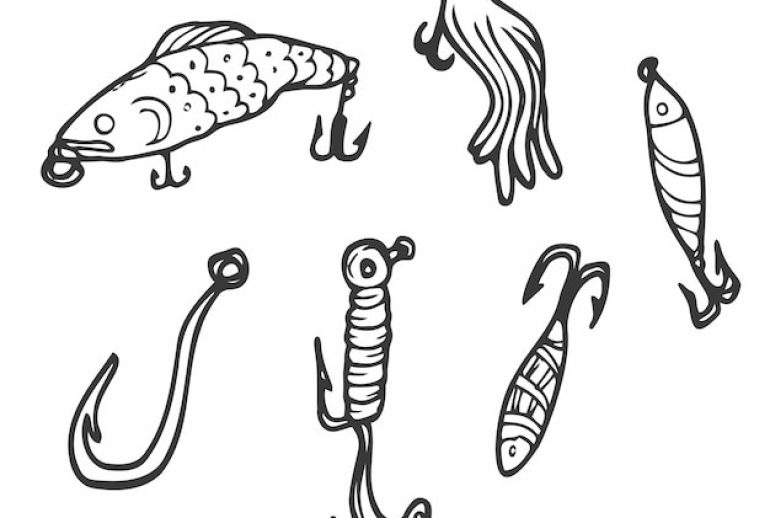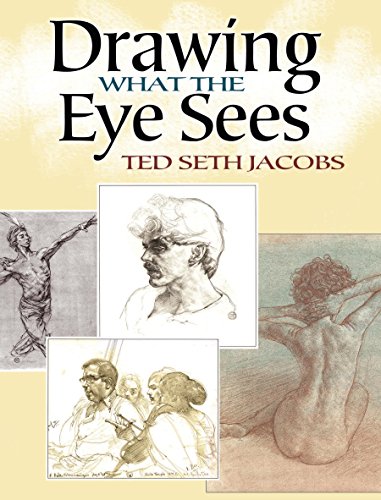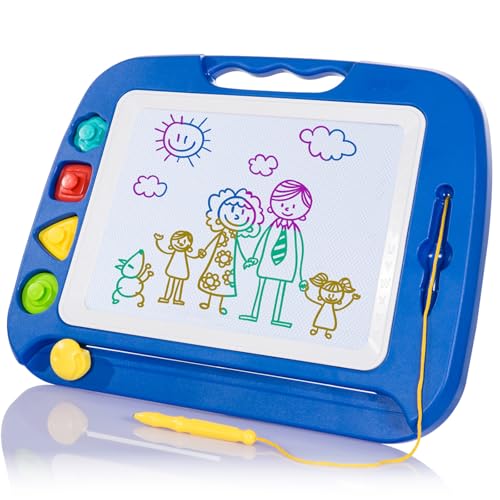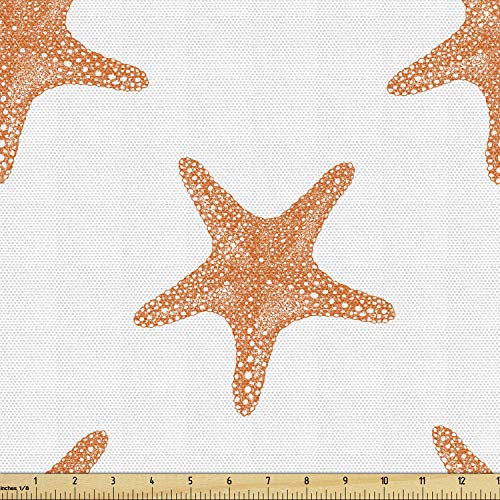Fishing and art are two hobbies that bring joy. Combining them can be fun.
In this post, we explore easy fishing drawings. These drawings are great for beginners and fishing lovers. They are simple yet capture the essence of fishing. Drawing fishing stuff can be a relaxing activity. It allows you to express your love for fishing in a creative way.
You don’t need to be an artist to enjoy this. With a few simple steps, you can create cool fishing drawings. This guide will show you how. We will cover different fishing-related items that are easy to draw. Whether you are drawing for fun or to decorate, these ideas are perfect. So grab your pencils and let’s start creating some cool fishing art!

Introduction To Fishing Drawings
Fishing is not just a hobby; it is an experience. Capturing these moments through drawings is an enjoyable way to preserve these memories. Drawing fishing scenes can be simple and fun, even for beginners. In this section, we will explore why sketching fishing scenes is a rewarding activity. We will also look at how drawing can be a relaxing pastime.
Why Sketch Fishing Scenes
Fishing scenes are full of life and detail. From the serene waters to the excitement of a catch, there is much to capture. Sketching these moments can help you appreciate the finer details. It brings you closer to the experience.
Here are some reasons why you might enjoy sketching fishing scenes:
- Visual Memory: Drawing helps in remembering the scene vividly.
- Creativity: It allows you to express your artistic side.
- Unique Perspective: Each drawing reflects your unique view of the scene.
Benefits Of Drawing For Relaxation
Drawing is more than just an artistic endeavor. It is a way to relax and unwind. Focusing on a drawing can help clear your mind. It offers a break from daily stress.
Here are some benefits of drawing for relaxation:
| Benefit | Description |
|---|---|
| Stress Relief | Drawing can reduce stress and promote calm. |
| Mindfulness | It helps you stay present and focused. |
| Improved Mood | Creating art can boost your mood and creativity. |
Engage in drawing to find a peaceful escape from the hustle of everyday life. It is a simple, accessible way to bring a bit of joy and relaxation into your routine.
Basic Drawing Tools
Learning to draw fishing stuff is fun and easy. The right tools can make a huge difference. Let’s explore the basic drawing tools you need to get started.
Essential Supplies
First, gather your essential supplies. Here’s a list:
- Pencils
- Erasers
- Pencil Sharpener
- Ruler
- Drawing Paper
Pencils are your most important tool. Use different types for different effects. A HB pencil is great for outlines. A 2B pencil is perfect for shading.
An eraser helps you correct mistakes. A kneaded eraser is soft and can be shaped. A vinyl eraser is harder and good for small areas.
A pencil sharpener keeps your pencils sharp. Always have one handy.
A ruler is useful for drawing straight lines. It’s especially helpful for drawing fishing rods.
Choosing The Right Paper
Choosing the right paper is important. It affects your drawing quality. Here are some types:
| Paper Type | Description |
|---|---|
| Sketch Paper | Lightweight, good for practice drawings. |
| Drawing Paper | Heavier, great for final drawings. |
| Bristol Board | Very smooth, ideal for detailed work. |
Sketch paper is lightweight. It’s good for practice drawings. Use it to try out new ideas.
Drawing paper is heavier. It’s great for final drawings. It holds up well to erasing and shading.
Bristol board is very smooth. It’s ideal for detailed work. Use it for your best drawings.
With these basic drawing tools, you’re ready to create amazing fishing stuff drawings. Enjoy the process!
Simple Fish Sketches
Creating simple fish sketches is a fun and easy activity. It’s perfect for beginners and art enthusiasts. These sketches can bring joy and creativity to your day. Let’s dive into the steps for drawing a basic fish and adding details and patterns.
Drawing A Basic Fish
To start, draw an oval shape. This will be the body of the fish. Then, add a triangle at one end for the tail. Draw a small circle for the eye near the head. Make sure the eye is placed correctly. Next, sketch two curved lines for the fins on both sides of the body. Finally, add a curved line for the mouth near the eye.
Now you have a basic fish shape. This simple structure can be the base for many fish drawings. You can use it to create different types of fish with various details and patterns.
Adding Details And Patterns
Once you have the basic fish shape, you can enhance it with details. Start by adding scales. Draw small, overlapping circles all over the body. This will give your fish texture. Then, add lines to the fins and tail. These lines should follow the natural curve.
For patterns, you can use different shapes and lines. Try adding stripes, dots, or even zigzag lines. This will make your fish unique and interesting. You can also experiment with different colors. Use bright and vibrant colors to bring your fish to life.
Here is a simple table to summarize the steps:
| Step | Description |
|---|---|
| 1 | Draw an oval for the body |
| 2 | Add a triangle for the tail |
| 3 | Draw a circle for the eye |
| 4 | Sketch fins on both sides |
| 5 | Add a curved line for the mouth |
| 6 | Add scales, lines, and patterns |
Practice makes perfect. Keep trying different designs and patterns. Soon, you’ll create beautiful and detailed fish sketches.

Sketching Fishing Gear
Drawing fishing gear can be a relaxing and enjoyable activity. Whether you are an artist or an angler, sketching fishing gear can help improve your drawing skills. It also offers a great way to pass the time. In this section, we’ll focus on two essential pieces of fishing equipment: the fishing rod and the tackle box.
Drawing A Fishing Rod
The fishing rod is a fundamental piece of gear for any angler. To start, sketch a long, straight line to represent the rod’s main body. This line should be slightly curved to show the rod’s flexibility.
Next, add a small oval at one end to depict the rod’s handle. Draw a series of small circles along the rod’s length to represent the guides where the fishing line passes through. Finally, sketch a thin line extending from the tip of the rod to represent the fishing line.
| Steps | Description |
|---|---|
| 1 | Draw a long, slightly curved line. |
| 2 | Add an oval at one end for the handle. |
| 3 | Draw small circles along the rod for guides. |
| 4 | Sketch a thin line from the rod’s tip for the fishing line. |
Sketching A Tackle Box
The tackle box holds all necessary fishing accessories. Start by drawing a rectangular shape to represent the box’s main body. Add a smaller rectangle on top for the lid.
Next, sketch small compartments inside the box to show storage spaces. These can be simple lines dividing the box into sections. Add small details like latches on the lid and handles on the sides to make the sketch more realistic.
- Draw a rectangular shape for the main body.
- Add a smaller rectangle on top for the lid.
- Sketch lines inside to create compartments.
- Add details like latches and handles.
Fishing Scenery Ideas
Fishing scenery ideas can spark the imagination of any artist. Whether you are a beginner or advanced, drawing fishing scenes can be relaxing and enjoyable. It helps to think about the elements that make up a peaceful fishing spot. Here are some ideas to get you started on your next masterpiece.
Drawing A Tranquil Lake
A tranquil lake scene can be very soothing. Start with a smooth, calm water surface. Add gentle ripples to show movement. Draw a small boat or a fisher on a pier to bring life to the scene. Trees with hanging branches can frame the lake beautifully. Include a few ducks or fish jumping out of the water. This gives your drawing a lively touch.
Sketching A River Scene
A river scene can be full of energy. Begin with the flowing water. Draw curves to show the river’s path. Add rocks and plants along the banks. This adds detail and interest. Draw tall trees and bushes to create a natural look. Include a fisherman casting a line into the water. Show the river narrowing or widening to add depth. A bridge or a waterfall can be great focal points.

Incorporating Anglers
Drawing fishing scenes brings a unique charm to any artwork. Including anglers in your drawings adds life and interest. It makes the artwork relatable and engaging. Here, we explore easy ways to incorporate anglers into your fishing drawings.
Simple Angler Silhouettes
Creating simple angler silhouettes is a great way to start. Silhouettes are easy to draw and can be very effective. Begin with a basic outline of a person holding a fishing rod.
- Draw a straight line for the rod.
- Add a small circle for the reel.
- Sketch a basic human figure with simple lines and shapes.
Focus on the posture. Show the angler standing, casting, or reeling in a catch. This simplicity captures the essence without getting bogged down by details.
Adding Movement To Figures
Movement brings your drawings to life. Show the angler in action. This could be casting a line, reeling in a fish, or even just standing with a relaxed posture.
- Draw the rod bending slightly to show tension.
- Angle the body to show the effort involved in casting.
- Add small lines around the rod and reel to depict movement.
These small details make a big difference. They help convey the excitement and effort involved in fishing.
| Action | Details to Add |
|---|---|
| Cast | Rod bending, angled body |
| Reeling | Tension lines around rod, effort in body posture |
| Standing | Relaxed posture, rod held loosely |
Practice these simple techniques. Your fishing drawings will become more dynamic and interesting.
Final Touches
Adding the final touches to your fishing drawings can make them stand out. These last steps bring depth and life to your artwork. Follow this guide for a polished and professional look.
Shading And Texturing
Shading and texturing add dimension to your drawings. Use light and dark tones to create shadows and highlights. This will give your fish a more three-dimensional look. Begin by identifying the light source. Shade the opposite side of the light source to create depth.
For texture, consider the scales and skin of the fish. Use short, curved lines to mimic scales. Make the lines denser in darker areas. Lighter areas should have fewer lines. This technique makes the fish look more realistic.
Finishing With Color
Color adds vibrancy to your drawing. Choose colors that reflect the natural look of the fish. Start with a base color. Add layers of different shades to create depth. Use darker colors for shadows and lighter ones for highlights.
Blend the colors smoothly to avoid harsh lines. You can use colored pencils, markers, or digital tools for coloring. Ensure the colors are consistent with your shading and texturing. This balance will make your drawing pop.
Frequently Asked Questions
How To Draw Cool Fishing Stuff Easily?
Start with simple shapes. Add details like hooks and lines. Practice makes perfect.
What Tools Do I Need For Fishing Drawings?
Basic tools include pencils, erasers, and paper. Colored pencils or markers can add flair.
Can Kids Draw Fishing Stuff?
Yes, kids can draw fishing stuff. Simple drawings are great for beginners.
Where To Find Fishing Drawing Ideas?
Look online for tutorials or watch drawing videos. Nature and fishing magazines also inspire.
Conclusion
Creating cool fishing stuff drawings can be simple and fun. Grab your tools and start sketching. Practice makes perfect, so keep drawing. You’ll improve over time. These easy drawings can also inspire your friends. Share your creations and enjoy the process.
Remember, it’s about having fun and being creative. Happy drawing!














